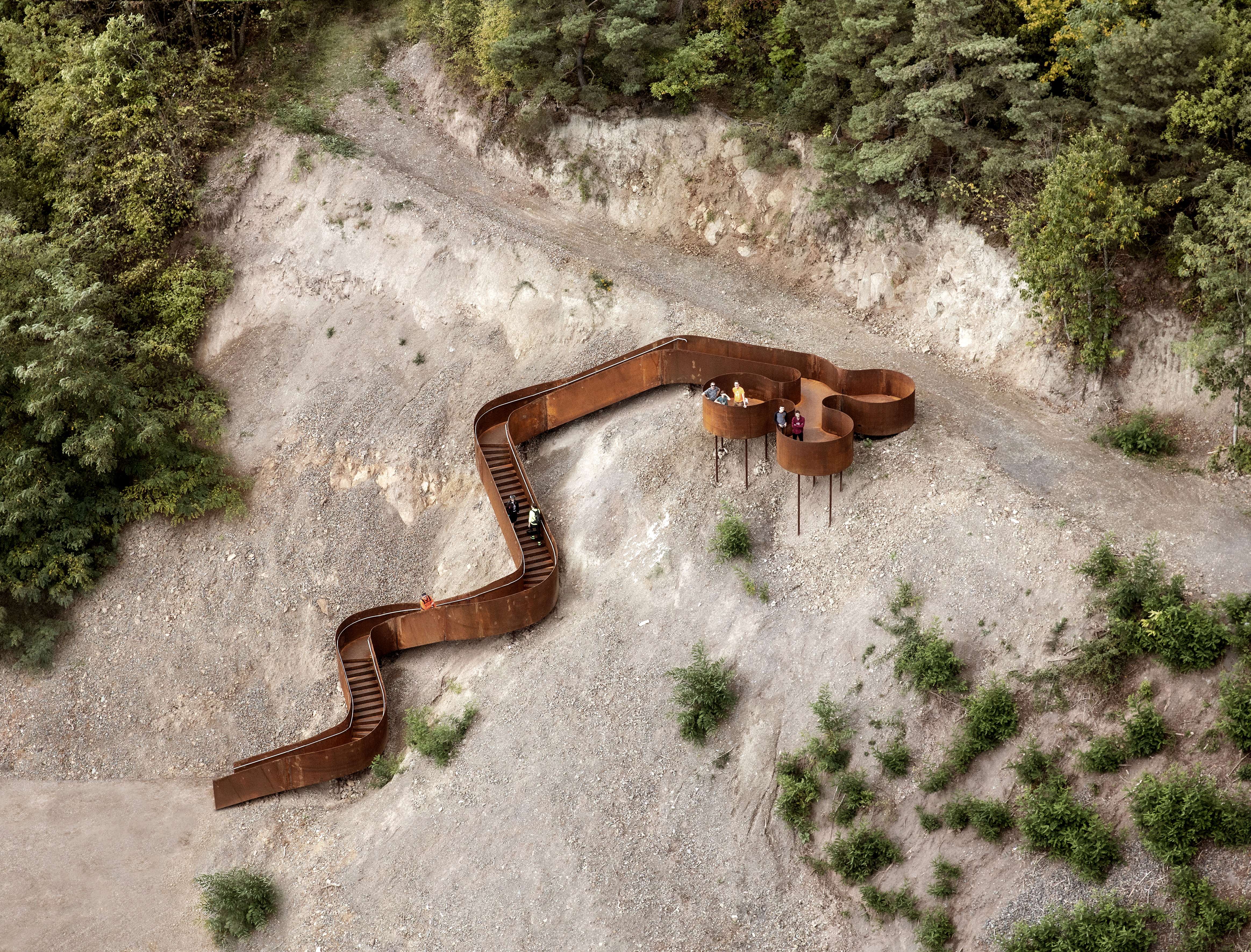
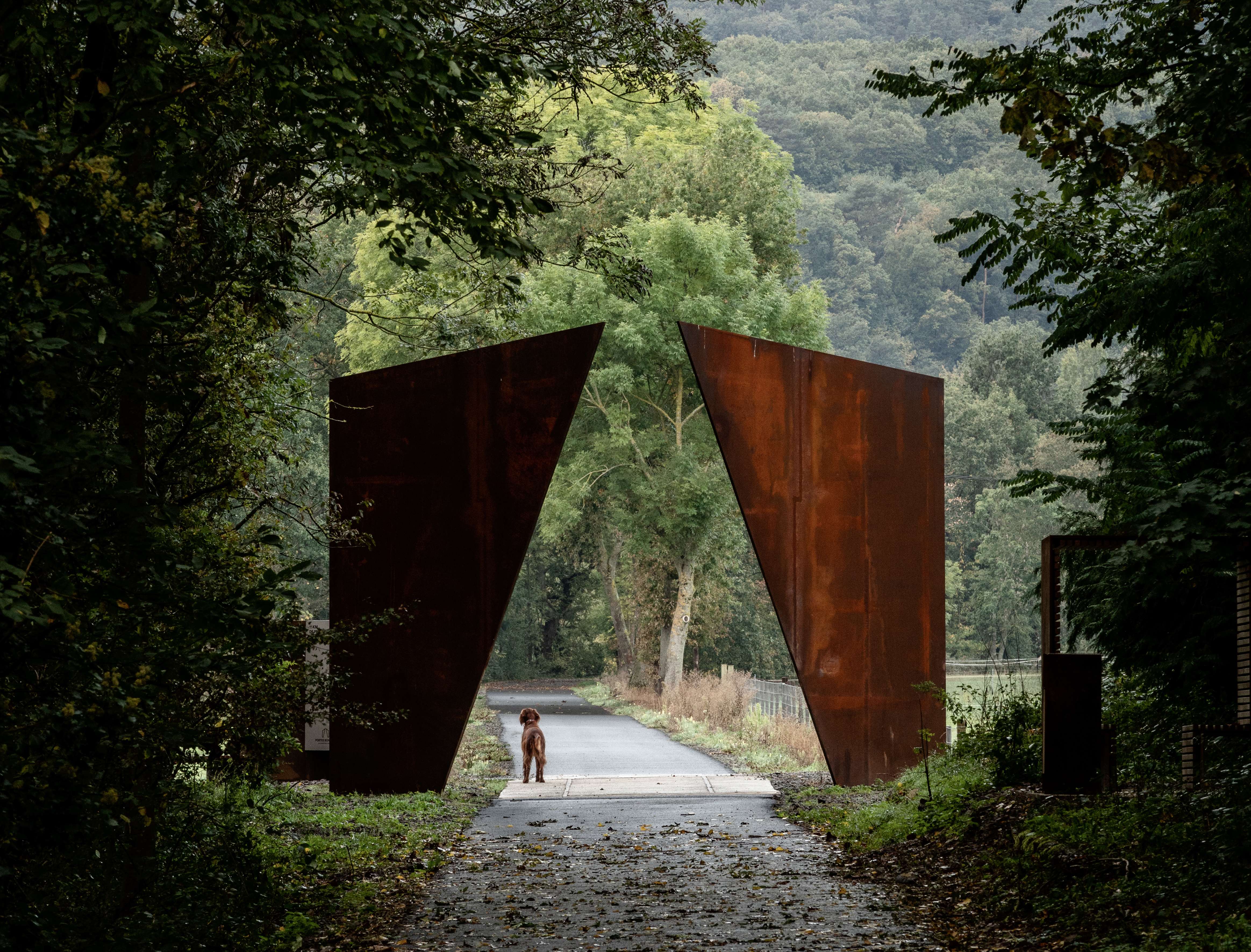
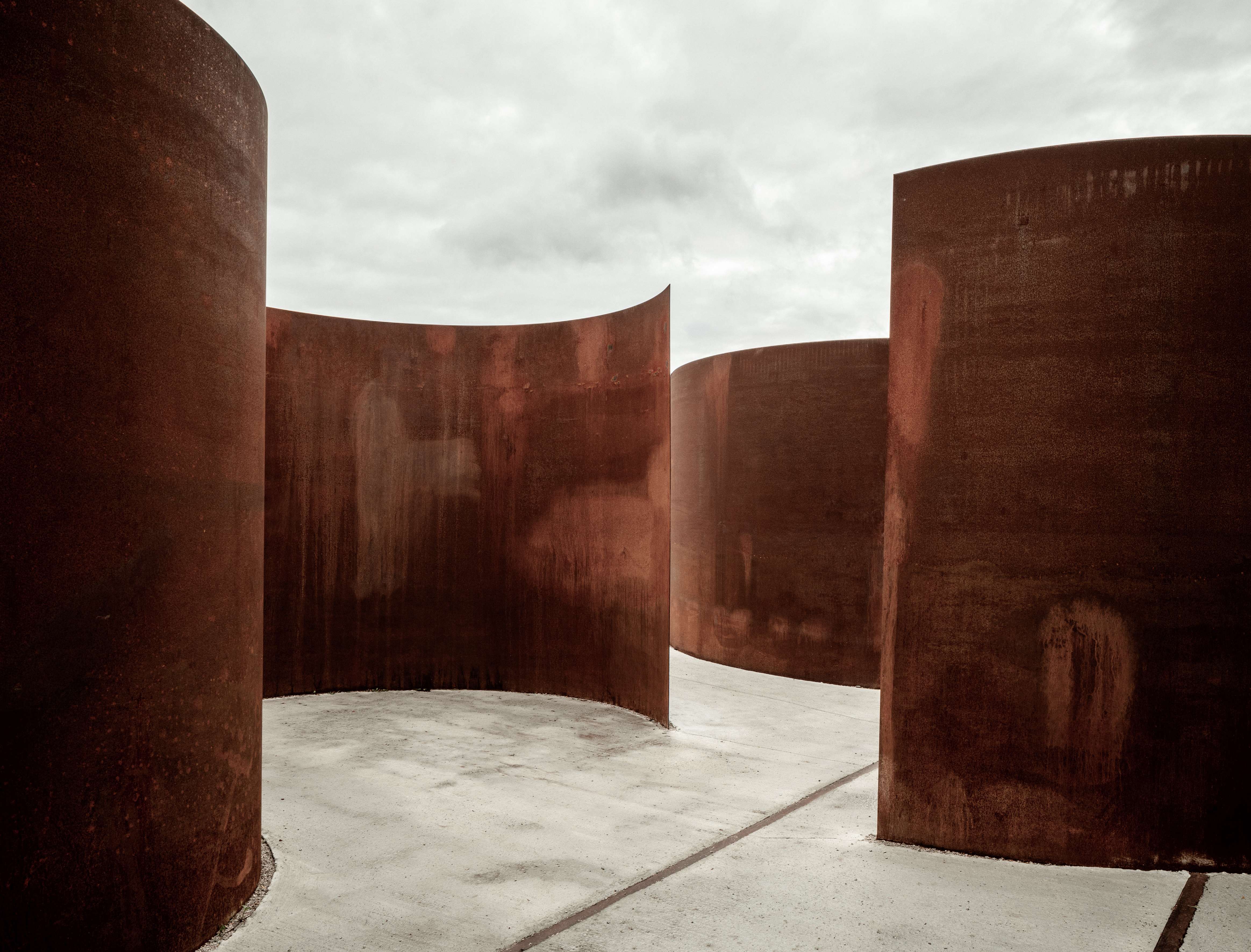
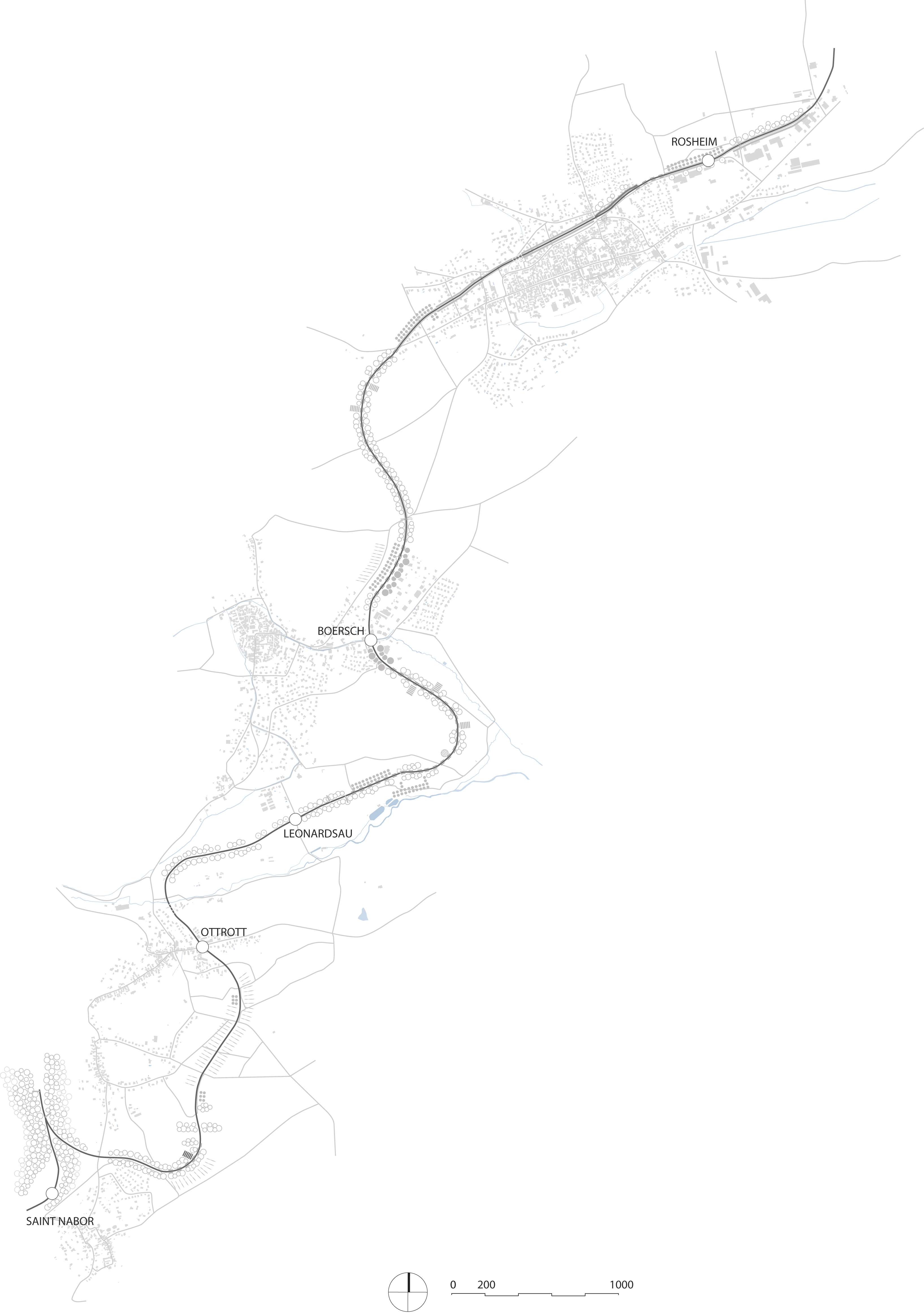
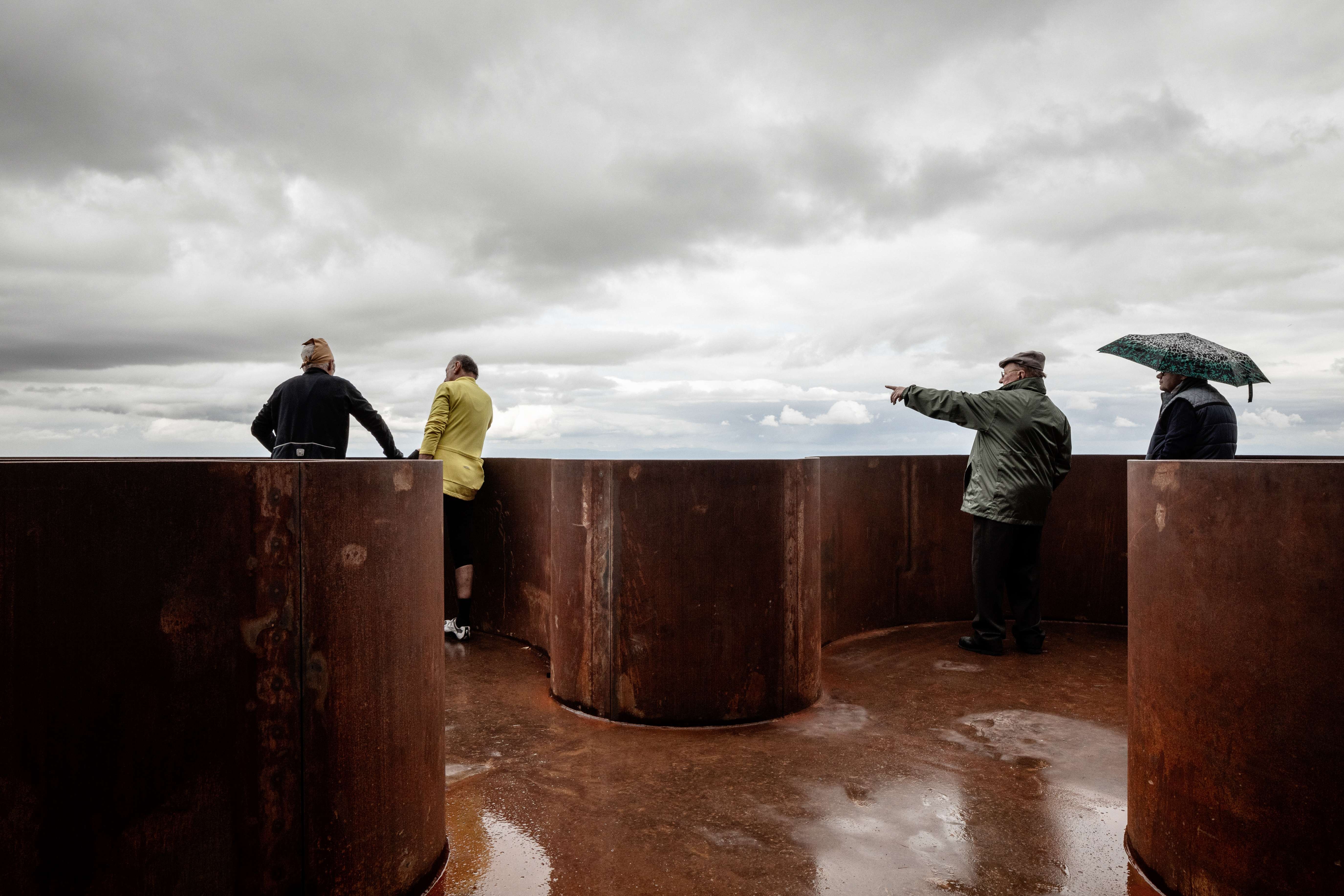
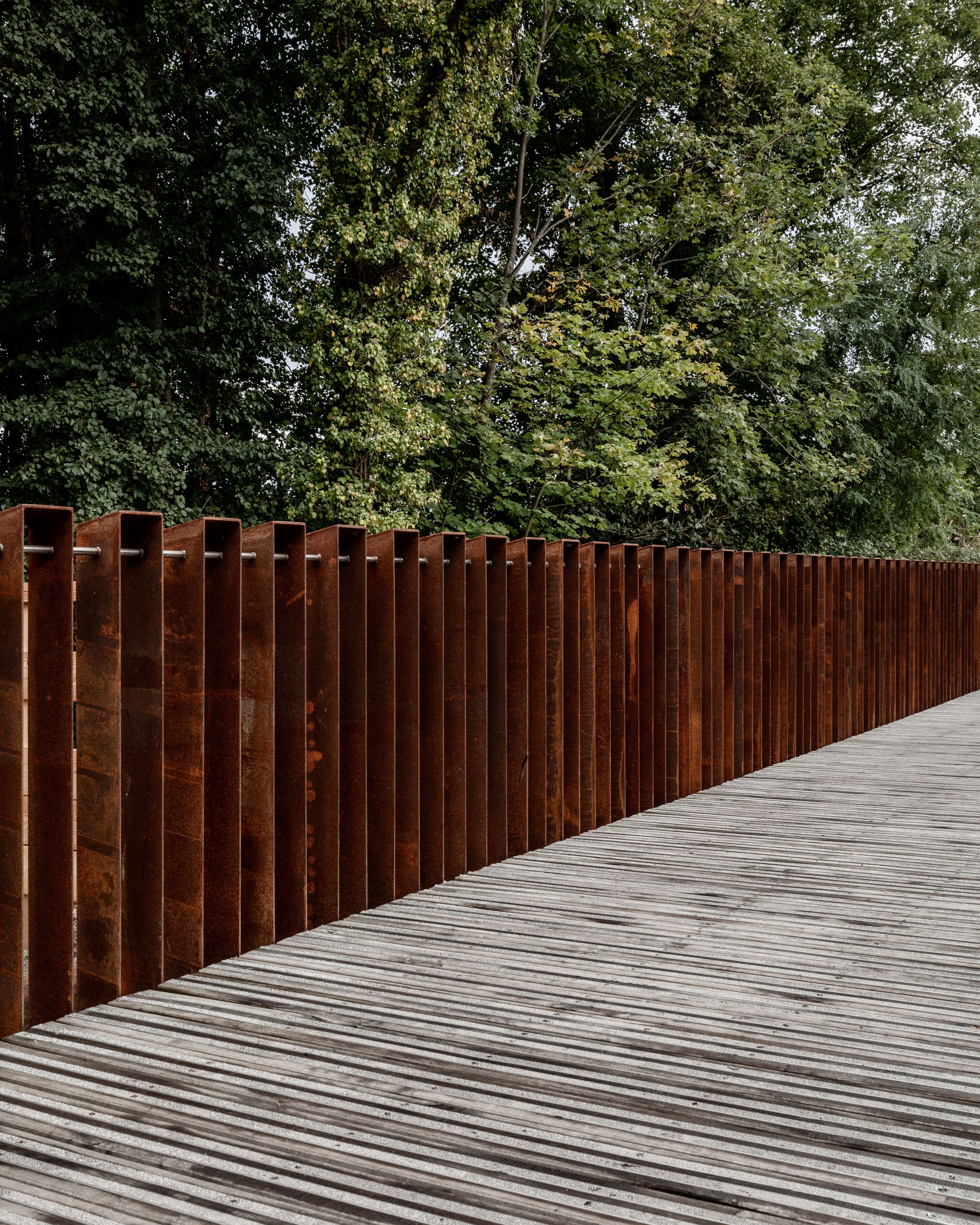
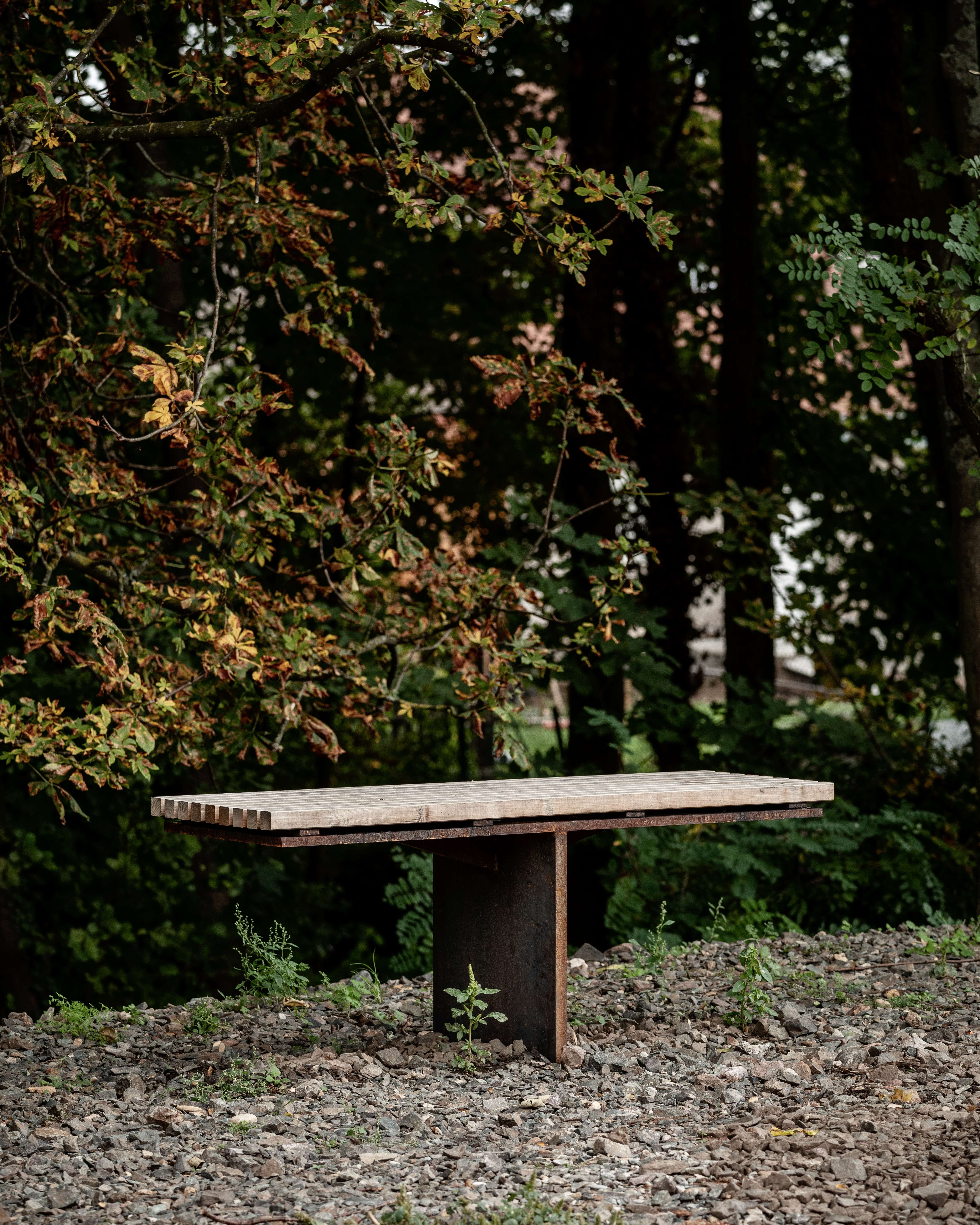
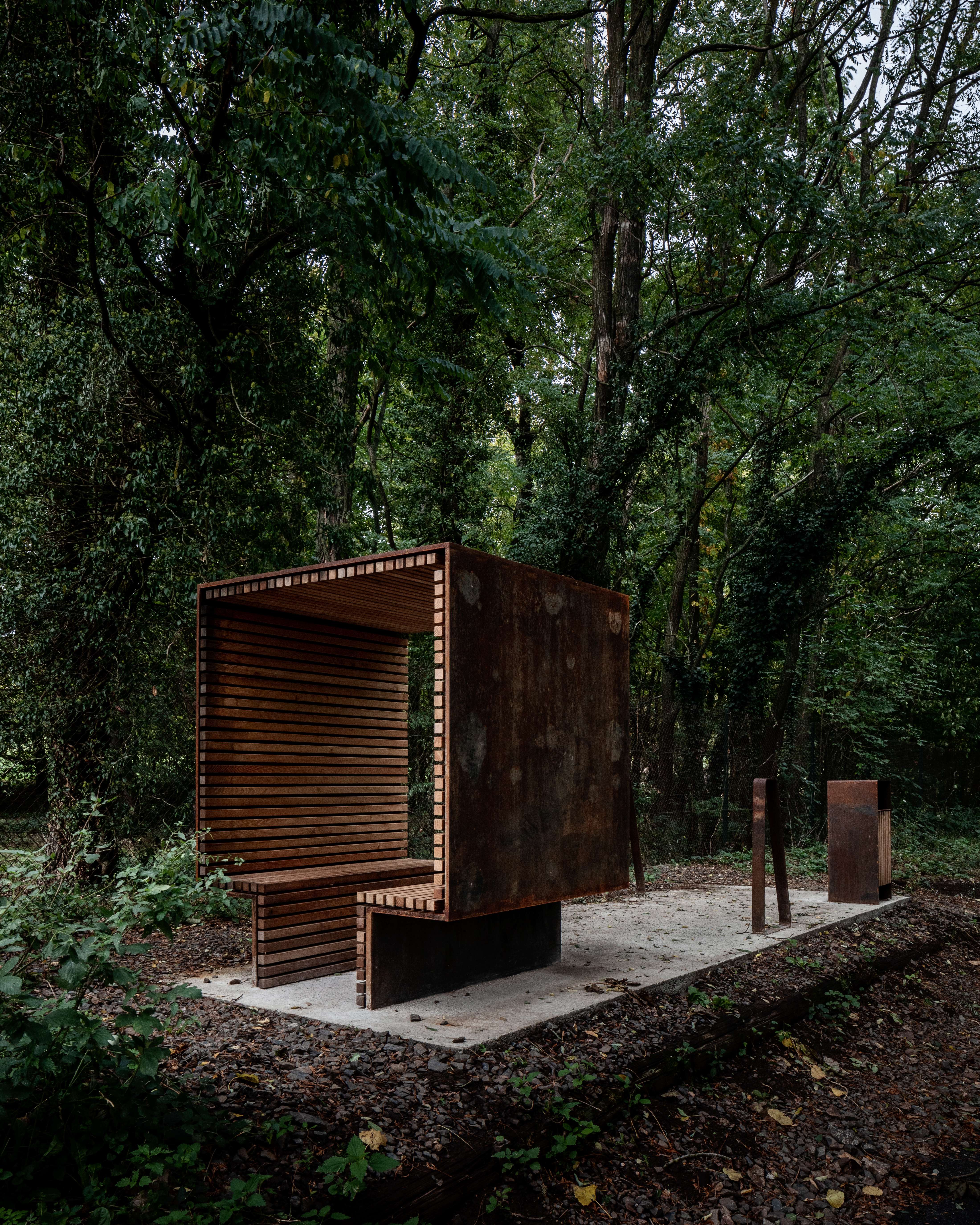
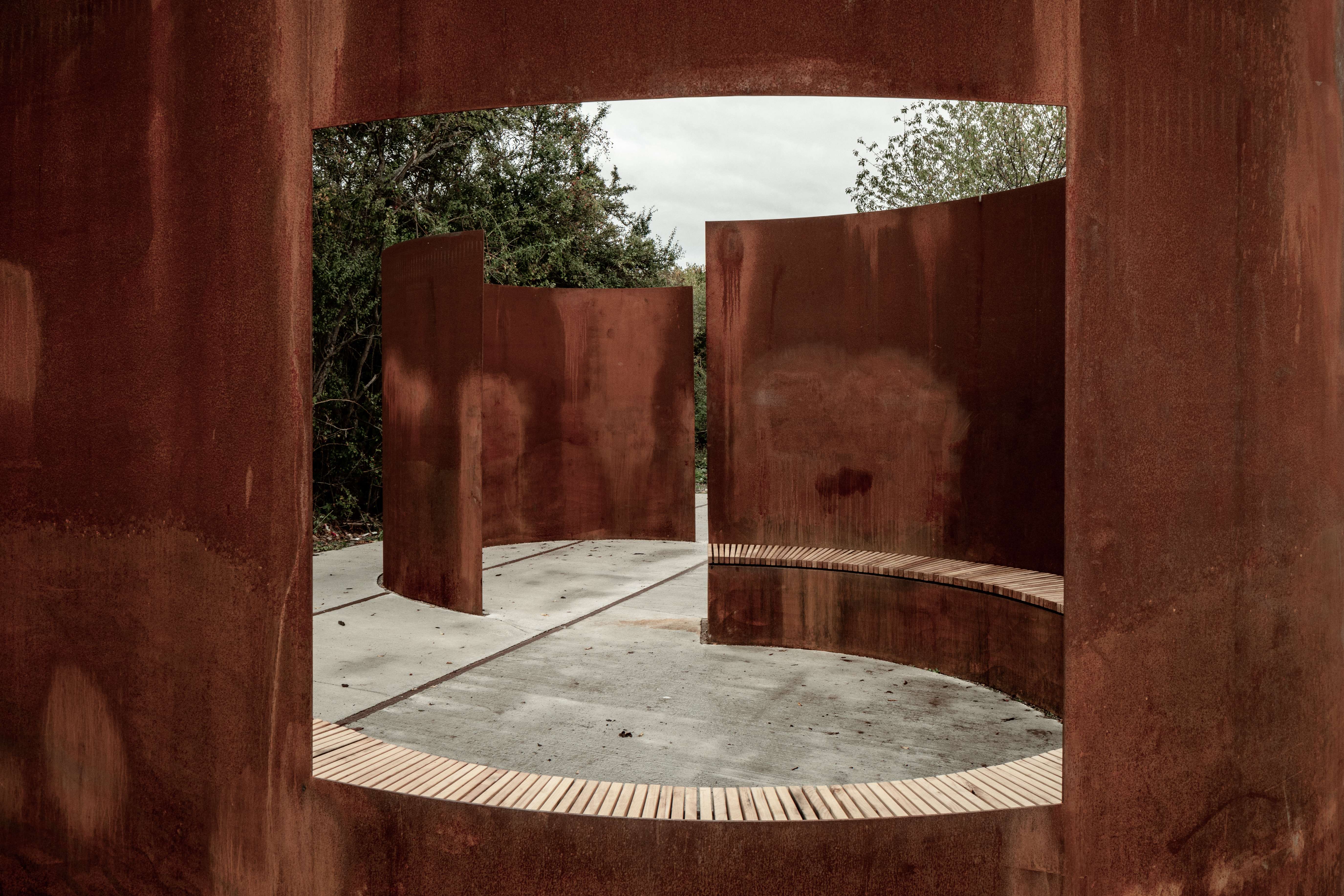
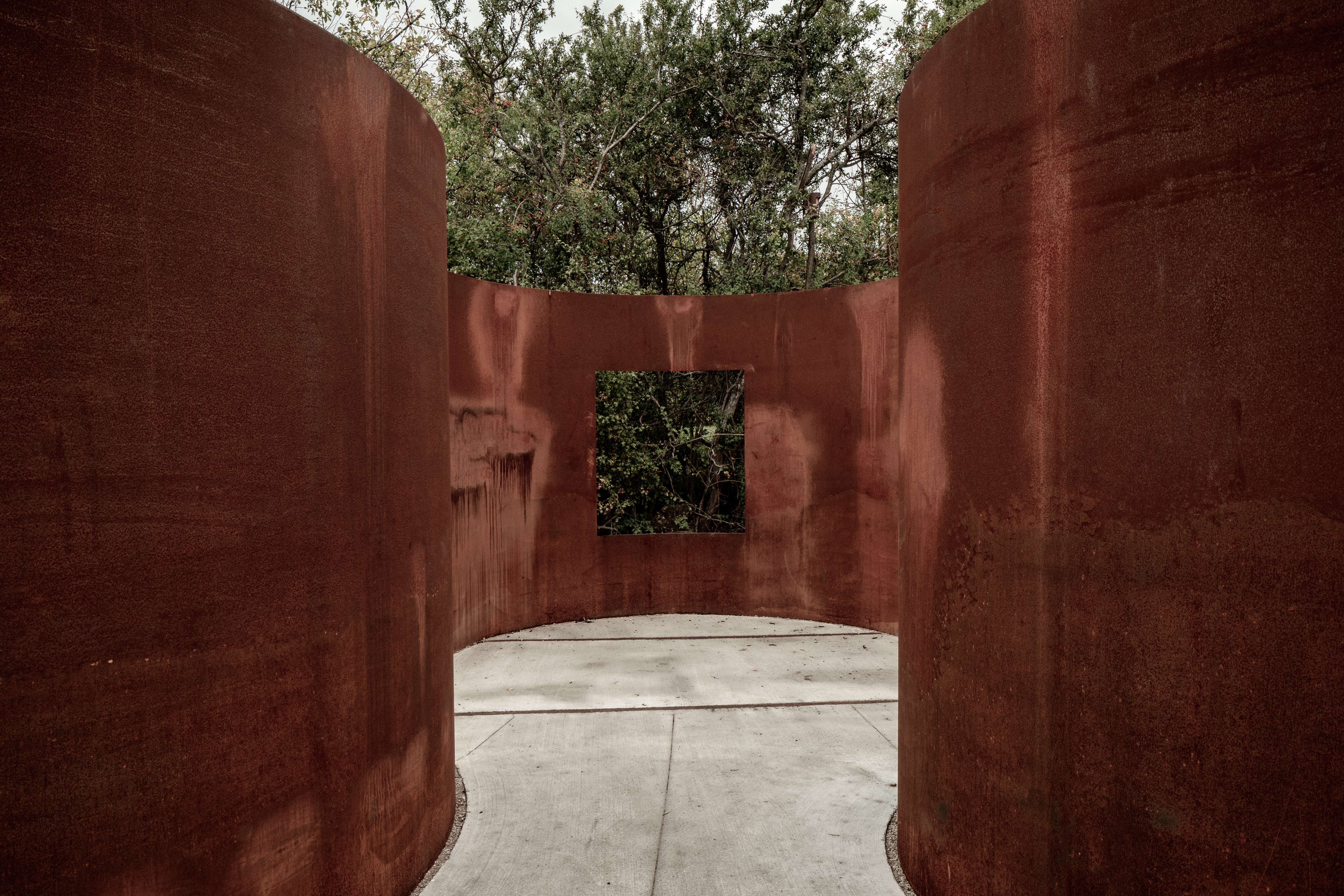
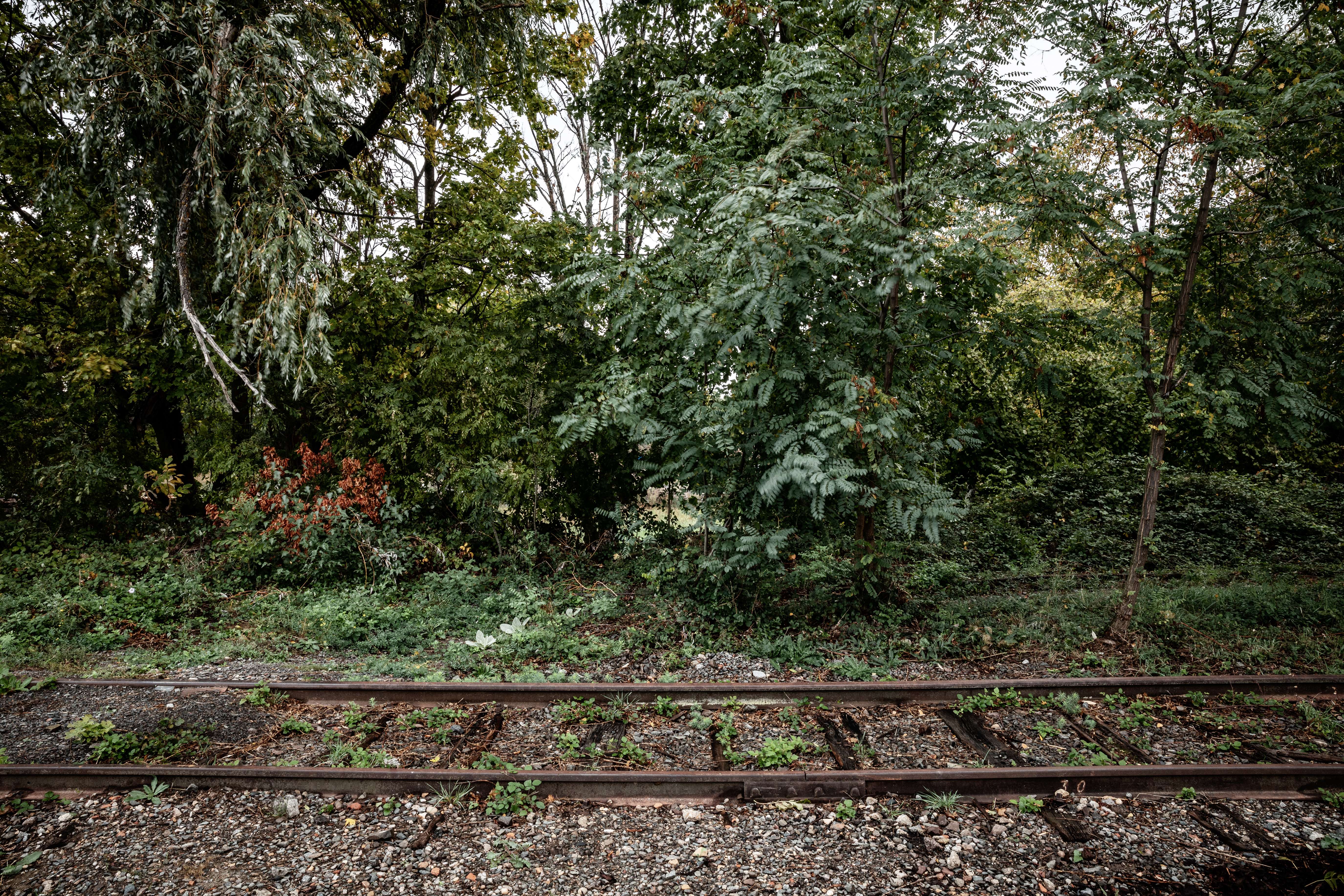
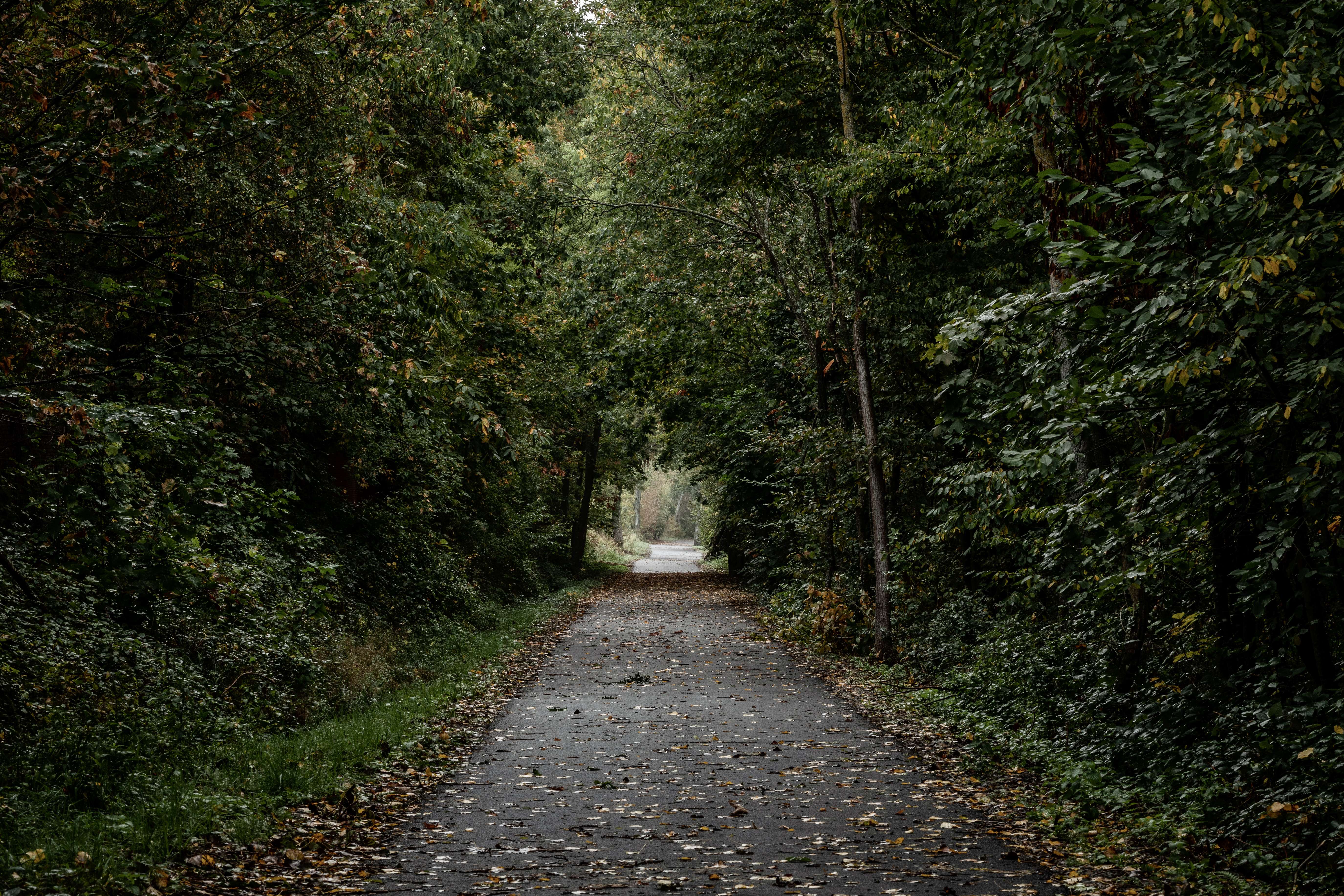
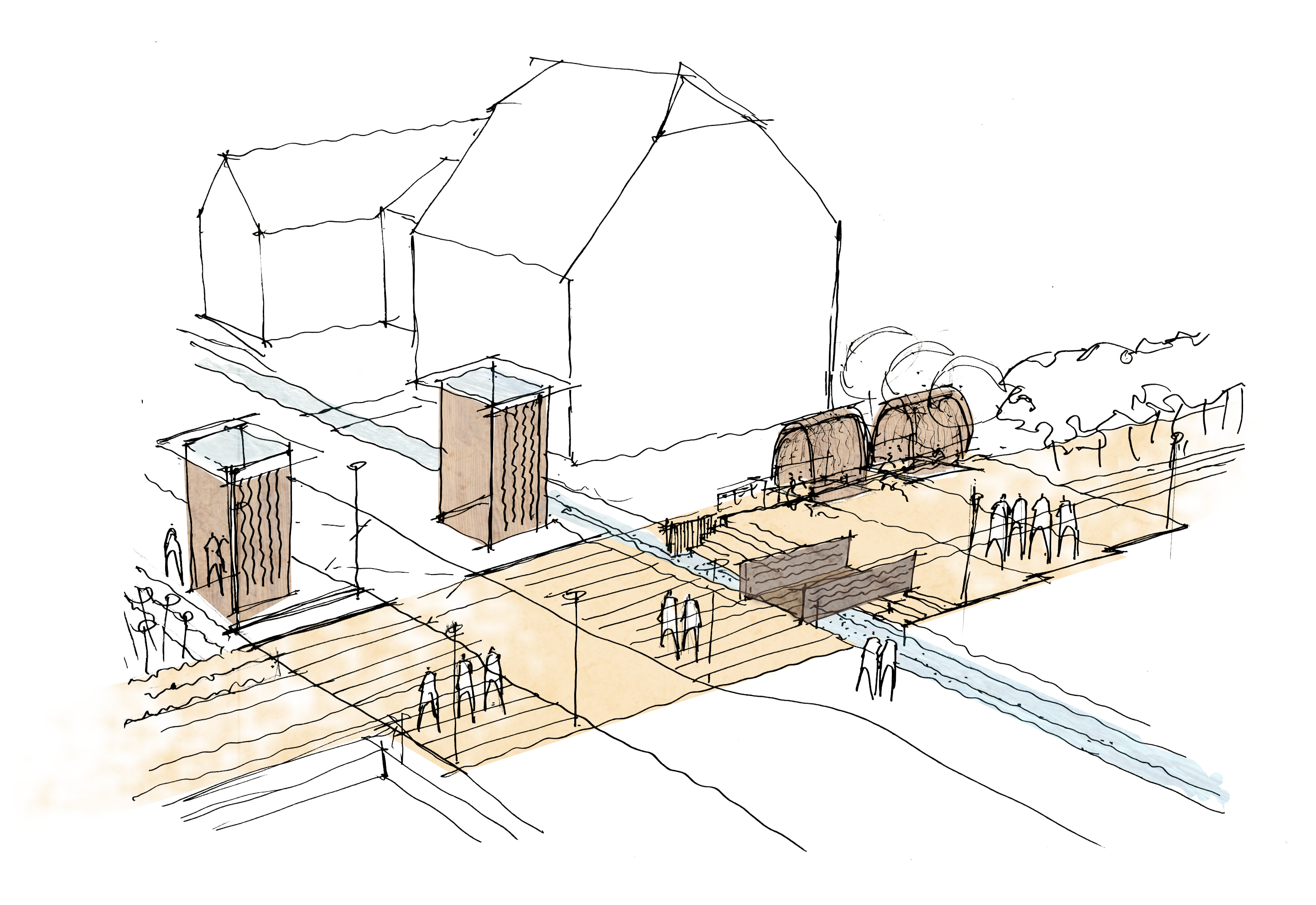
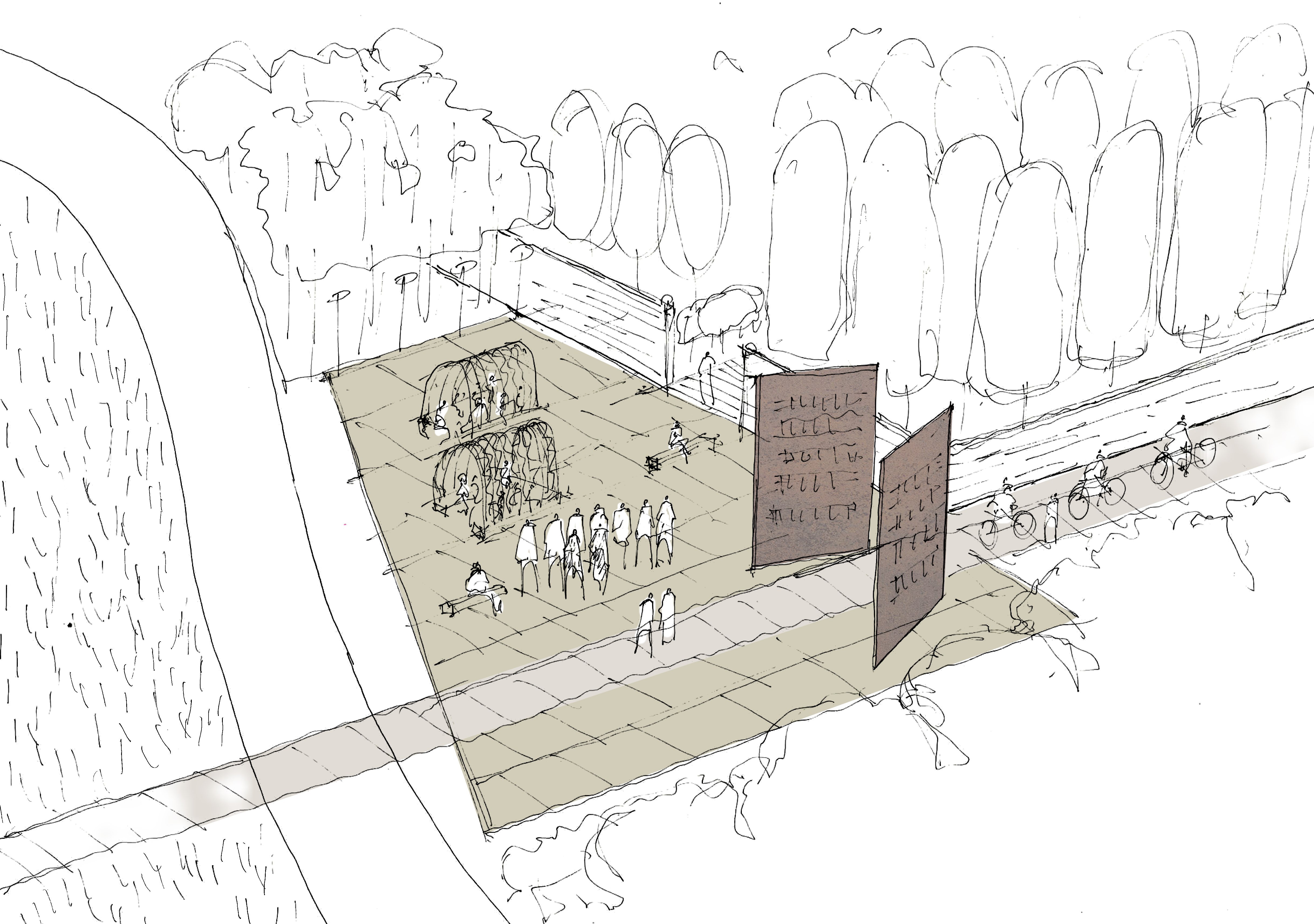
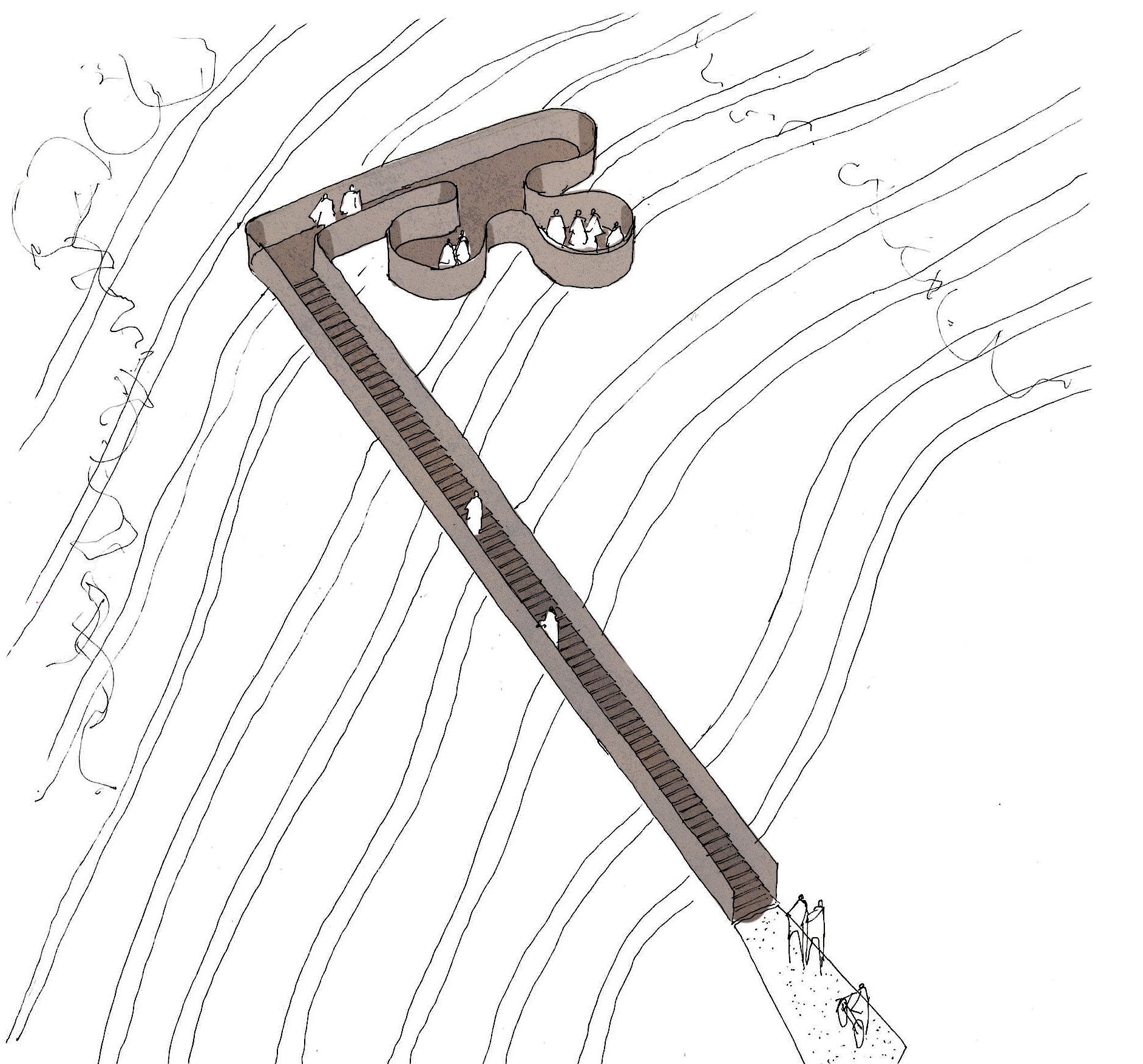
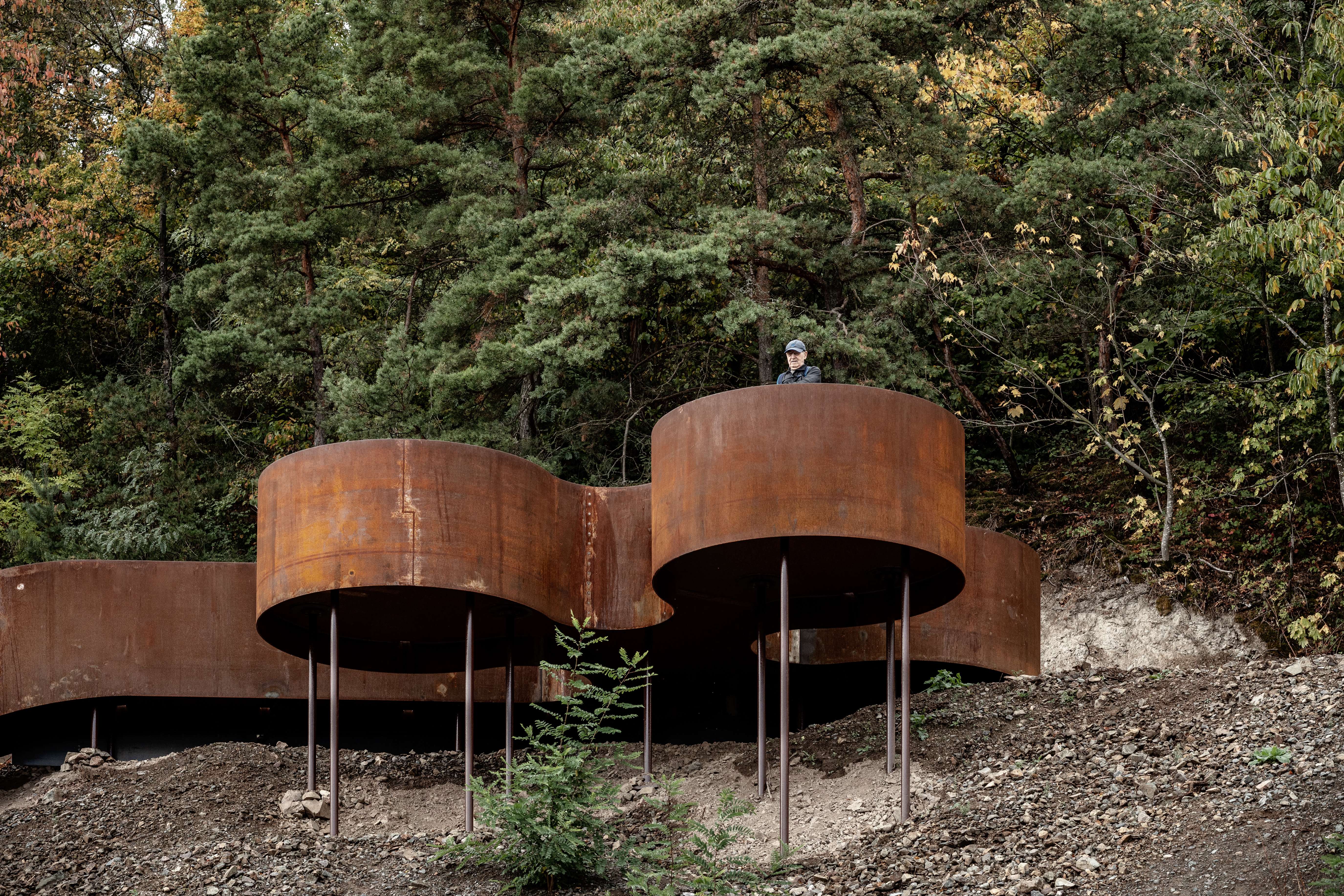
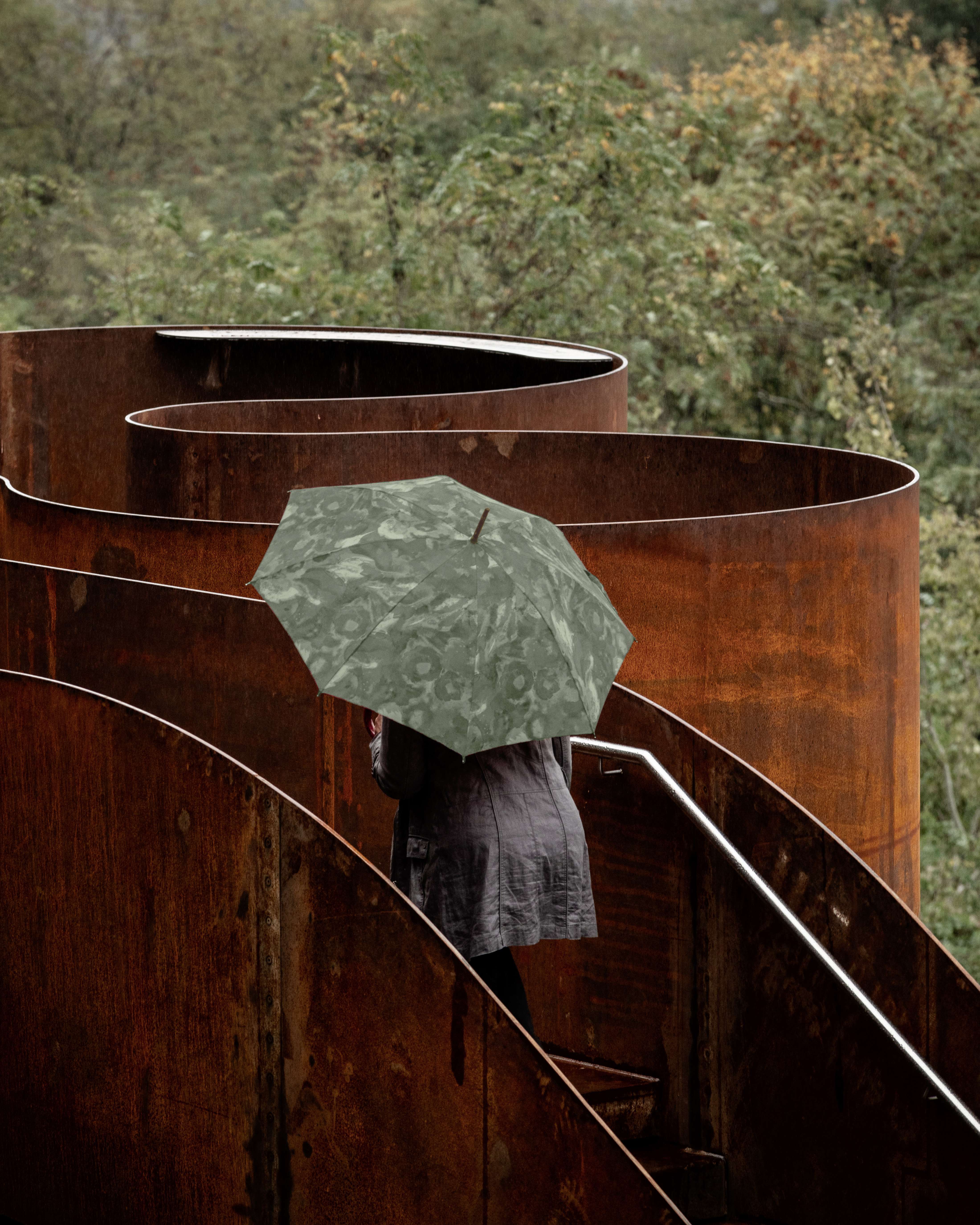
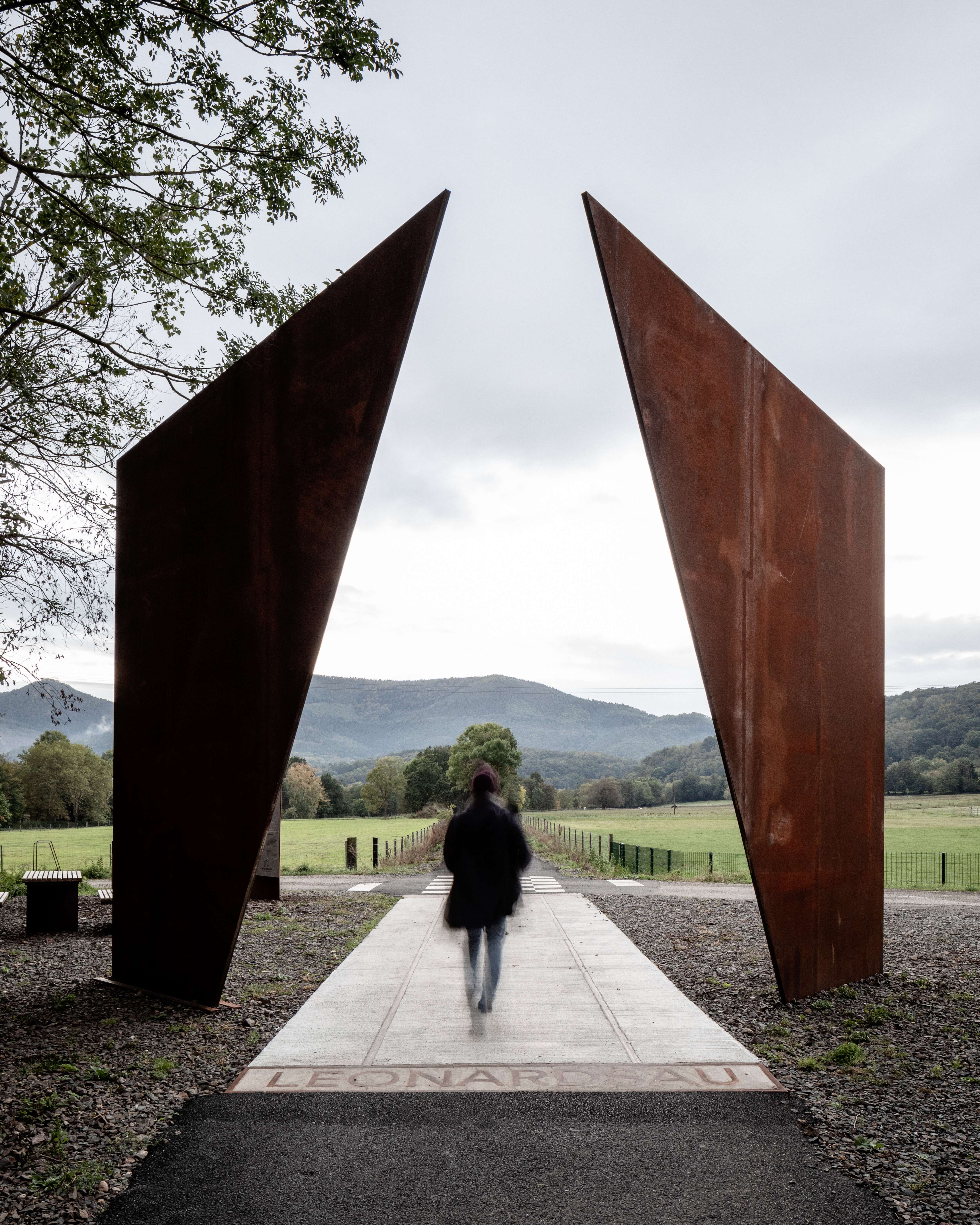
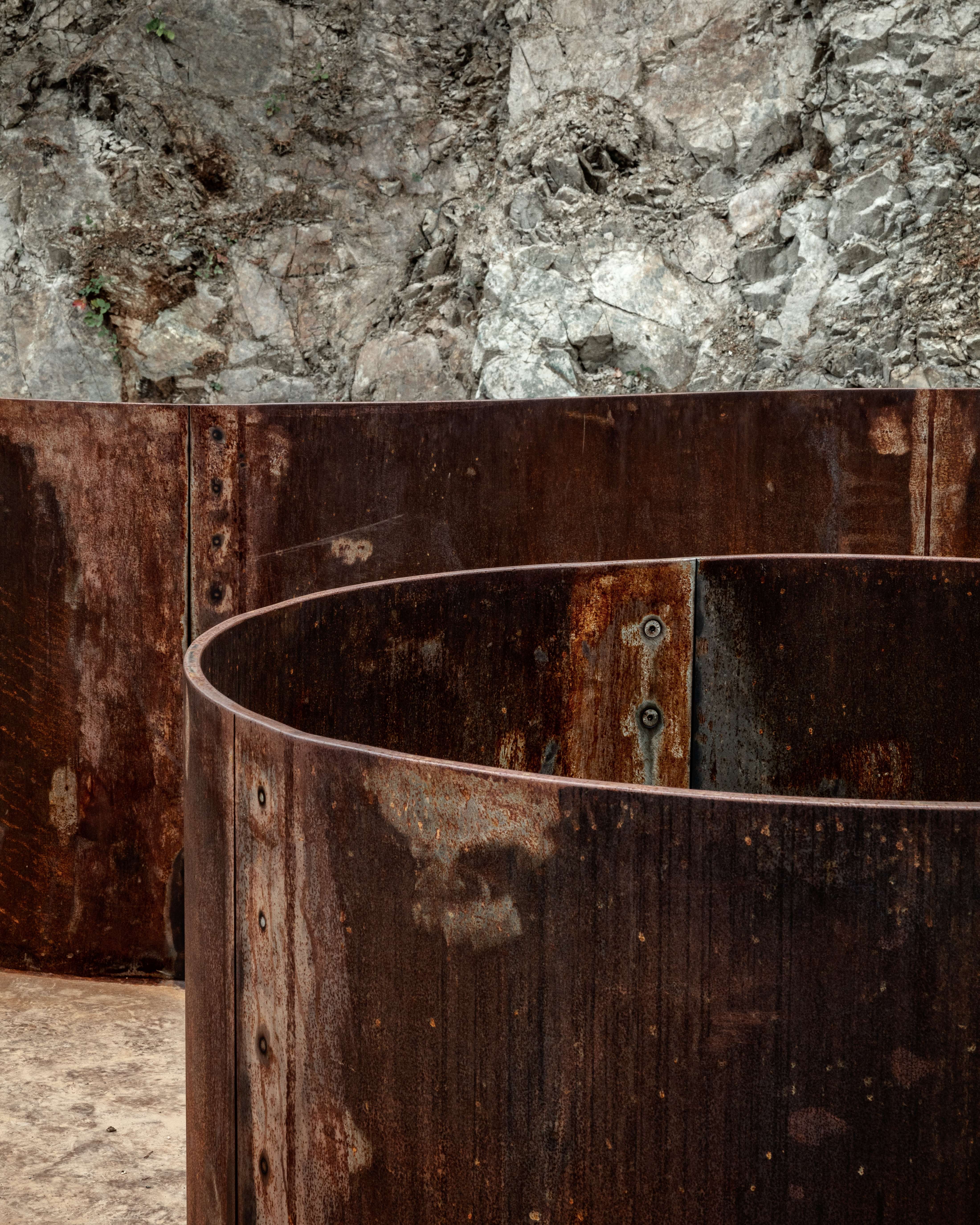
Chemin des Carrières
Chemin des Carrières
Chemin des Carrières
Chemin des Carrières, the Quarries’ Track, is an undulating lace in the landscape. Our ambition behind the re-conquest of the Rosheim - St Nabor railway in Alsace, is to form an invitation to travel and explore.
The ominous, and sometimes hidden, vestiges of the railway expresses the nature of the site. The desire to create a route to serve the quarries had to adapt to the landscapes of the sub-Vosges hills, and tells the history of the landscape and of men. The journey to discover forgotten landscapes, and explore a different point of view, addressing both locals and tourists. Like the old track that offered a dual function (industrial and passenger transport), the route has a double vocation where the functional must rub shoulders with the imaginary of traveling.
To pay tribute to the railway, and honour the history of the region, the train tracks of Rosheim are preserved and incorporated to the route. In the cases where this was not possible the steel was melted and used in the steelwork and construction of the pavillions, with great help from the local steel factory, Métallerie Nouyrit. With locally based steel workers and close collaboration with Parenthèse Paysage the project benefited from local knowledge and succeeds in generating public spaces that answers to how the people of Alsace use their surroundings. At the same time as exploring new ways of creating spontaneous meetings, and opening up for exploring the magnificent nature and landscapes that surrounds the urban areas.
Along the 11km path, there is a story split into five chapters of different landscape-sequences that offers a variety of universes, and highlights remarkable sites. Unusual elements punctuate the way, aiming at awakening the visitor’s senses.
Rosheim tells the story of the past. The pavilion has the character of a labyrinth and plays with irregular concave and convex interior. The train tracks are conserved in the area and the sculpture is opened and closed to specific views of the surrounding landscape.
Boersch tells the story of water. The river is a dynamic element in the landscape, running to the ocean. In Boersch we enlarge the riverbed and build a large open space amphitheatre to access the water, and make room for meatings between people.
Leonardsau tells the story of the land. After a long green tunnel, two large corten steel plates amplify the opening effect at the end of the forest corridor to the open up to the landscape.
Ottrott tells the story of travel. Former train station, the stop materializes the history of the railway and highlight the presence of the heritage (balance, bridge, crane, pump...). In a woven fabric of housing buildings, the reservoir, symbolizing water, and concrete crossings connect housing to historical elements and landscape.
Saint-Nabor tells the story of luck. At one of the highest platforms in the area, created by machine, the travellers will discover a spectacular place: a corten steel structure offering a wide view of the valley of Rosheim and the plains of Alsace.
The projects seeks to tie the five towns together and generate new relations and public spaces that can be used by both locals and tourists. A part of the idea is that architecture can help reverse the trend of urbanization, and rather make rural areas attractive by emphasizing their inherent qualities.
